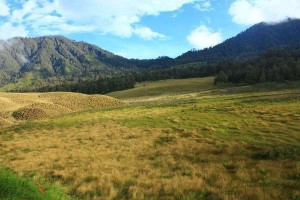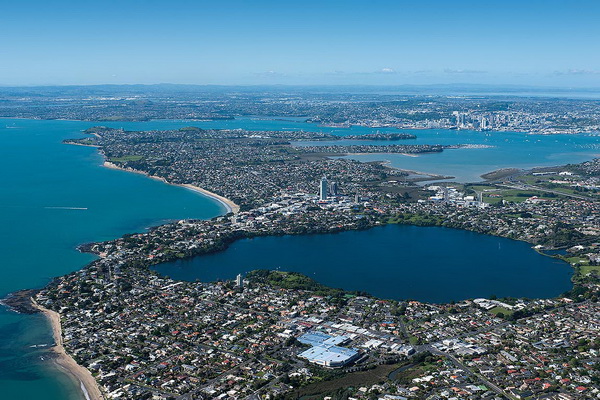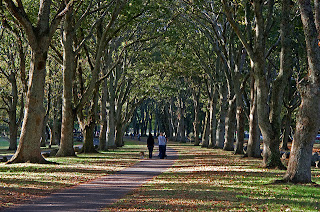With a reputation as being one of the most beautiful and deserve tourist spots in Asia, Bali attracts at most 1,000,000 visitors a year, from all around the world.
Geographically, Bali lies between the islands of Java and Lombok.
Bali is small, stretching approximately 140 km from east to west 80 km from north to south. The tallest of a string of volcanic mountains that run from the east to the west, is Gunung Agung, which last erupted in 1963. Lying just 8 south of the equator, Bali boasts a tropical climate with just two seasons (wet and dry) a year and an average annual temperature of around 28C. The wide and gently sloping southern regions play host to Bali's famed rice terrace among some of the most spectacular in the world. In the hilly, northern coastal regions, the main produce is coffee, copra, spices, vegetables, cattle and rice.



.
The Balinese have strong spiritual roots and despite the large influx of tourist over the years, their culture is still very much alive. The main religion is Agama Hindu Dharma, and although originally from India, the Balinese religion is a unique blend of Hindu, Buddhist, Javanese and ancient indigenous beliefs and different from the Hinduism practiced in India today.
Naturally creative, the Balinese have traditionally used their talents for religious purposes and most of the beautiful work to be seen here has been inspirit by stories from the Ramayana and other Hindu epics.
The Majority of Bali's 3,000,000 people live, for the most part, in tight, village communities with large extended families. The largest towns are the capital Denpasar and Singaraja in the North. The main tourist area stretches from Kuta to Seminyak. Kuta became major attraction during the tourist boom of the 70's, because of it famed white-sand beaches, the surf and stunning sunsets.
Today, the Kuta to Seminyak stretch is a major tourist destination, with hundreds of hotels, restaurants and shops. Those in search of a little peace and quite tend to head for the more sedate resorts of Sanur and Candi Dasa, on the east coast, or Lovina in the north. Nusa Dua, on the southern-most peninsula of the island, houses many five star hotels. The central village of Ubud, in the hilly region of Gianyar, has also blossomed as a tourist attraction and is now considered to be the artistic and cultural centre of Bali.
CULTURE



.
HISTORY Although there are no artifacts of records dating back to the Stone Age, it is believe that the first settlers on Bali migrated from China around 2,500B.C. By the Bronze era around 300 B.C. quite and evolved culture existed on Bali. The complex system of irrigation and rice production, still in use today, was established around this time.
It appears that the time religion, around 500 A.D. was predominantly Buddhist influence. A Chinese scholar, Yi-Tsing, in 670 A.D. reported, on a trip to India, that he had visited a Buddhist country called Bali.
It wasn't until the 11th century that Bali received the first strong influx of Hindu and Javanese culture. With the death of his father around AD 1011, the Balinese Prince, Airlanggha, moved to East Java and set about uniting it under one principality. Having succeeded, he then appointed his brother, Anak Wungsu, as ruler of Bali. During the ensuing period there was a Javanese language, Kawi, became the language used by the aristocracy, one of the many Javanese traits and costume adopted by the cause.
With the death of Airlangga, in the middle of the 11th century, Bali enjoyed a period of autonomy. However, this proved to be short-lived, as in 1284 the east Javanese King Kertanegara, conquered Bali and ruled over it from Java. In 1292 Kertanegara was murdered and Bali took the opportunity to liberate itself once again. However, in 1343, Bali was brought back under Javanese control by its defeat at the hands of GajahMada, a general in the last of the great Hindu-Javanese empires, the Majapahit. With the spread of Islam throughout Sumatra and Java during the 16th century, the Majapahit empires began to collapse and a large exodus of aristocracy, priests, artists and artisans to Bali ensued. For a while Bali flourished and the following centuries were considered the Golden Age of Bali's cultural history. The principality of Gelgel, near Klungkung, became a major centre for the Arts, and Bali became the major power of the regions, taking, control of neighbouring Lombok and parts of East Java. THE EUROPEAN INFLUENCE
The first Dutch seamen set foot on Bali in 1597, yet it wasn't until the 1800's that the Dutch showed an interest in colonizing the island. In 1846, having had large areas of Indonesia under their control since the 1700's. The Dutch government sent troops into northern Bali. In 1894, Dutch forces sided with the Sasak people of Lombok to defeat their Balinese rulers. By 1911, all the Balinese principalities had either been defeated in Battle, or had capitulated, leaving the whole island under Dutch control. During World War II, the Dutch were expelled by the Japanese, who had occupied Indonesia from 1942 to 1945.
After the Japanese defeat, the Dutch tried to regain control of their former colonies, but on August 17, 1945, Indonesia was declared independent by its first President, Sukarno. After four years of fighting and strong criticism from the international finally ceded and in 1949, Indonesia was recognize as an independent country.
THE PEOPLE
Life in Bali is very communal with organization of villages, farming and even the creative arts being decided by the community. The local government is responsible for schools, clinics, hospitals and roads, but all other aspects of life are placed in the hands of two traditional committees, whose roots in Balinese culture stretch back centuries. The first, Subak concerns the production of rice and organizes the complex irrigation system. Everyone who owns a sawah, or padi field, must joint their local Subak, which then ensures that every member gets his fair distribution of irrigation water. The other community organization is the Banjar, which arranges al village festivals, marriage ceremonies and cremations. Most villages has at least one Banjar all males have to join one when they marry. Banjars, on average, have a membership of between 50 to 100 families and each Banjar has its own meeting place called the Bale Banjar. As well as being used for regular meetings, the Bale (Pavilion) is where the local gamelan orchestras and drama groups practice.
RELIGION
The Balinese are Hindu yet their religion is very different from that of the Indian variety. The Balinese worship the Hindu trinity Brahma, Shiva and Vishnu, who are sin manifestation of Supreme God Shanghyang Widi. Other Indian Gods like Ganesha (The Elephant-headed God) also often appear, but more commonly, one will see shrines to the many Gods and spirits that are uniquely Balinese. Balinese believe strongly in magic and the power of spirits, and much of the religion is base upon this. They believe that good spirits dwell in the mountain and that the seas are home to demon and ogres. Most villages have at least three main temples; one, the Pura Puseh or 'Temple of Origin', faces the mountains, another, the Pura Desa or village Temple, is normally found in the centre, and the last the Pura Dalem, is aligned with the sea and is dedicated to the spirits of the dead. Aside of these 'village' temples, almost every house has its own shrine. Some temples, Pura Besakih for example, on the slopes of mount Agung, are considered especially important and people from all over Bali travel worship there.
Offerings play a significant rule in Balinese life as they appease the spirits and thus bring prosperity and good health to the family. Everyday small offering trays (Canang Sari) containing symbolic food, flowers, cigarette and money, art placed on shrines, in the temples, outside houses and shops, and even at dangers cross road.
Festivals are another great occasion for appeasing the Gods. The woman bear huge, beautifully arranged, pyramids of food, fruit and flowers on their heads while the men might conduct a blood sacrifice through a cockfight. There are traditional dances and music and the Gods are invited to come down to joint in the festivities. The festival are usually very exciting occasions and well worth observing, if you are the area. Please refer to the back page 'A world of Advice' for Rules.
DANCE & DRAMA Dance and drama have historically played an important rule in Balinese society. Through this medium, people learned about the tales of the Ramayana, Mahabarata and other epic stories from Balinese history. The following art brief description of some of the more well-known dance-dramas that can be seen at regular performances, throughout Bali.
BARIS
This is a warrior's dance. It is usually performance by men, either solo or in a group of five or more.
BARONG & RANGDA
This is basically a story about the struggle between good and evil. Good is personified by the Barong Keket, a stange, fun-loving creature in the shape of a shaggy semi-lion. Evil is a represented by Rangda, a witch.
KECAK
The most famous of the Balinese dances, the Kecak, originated from the Shanghyang dance choirs, who chant a distinctive 'Kecak-Kecak' accompaniment. The Kecak, as a dance, developed in the 1930's in the village of Bona, where it is still performed regularly.
LEGONG
This dance tells the story of Princes Rangkesari who is held captive against her will by King Lakesmi. Rangkesari's brother, Prince Daha, gathers an army together to rescue his sister. The Legong is very-very classical and graceful dance, and is always performed by prepubescent girls, often as young as eight or nine years old.
SANGHYANG TRANCE DANCES
The Sanghyang Dedari is a performed by two girls, and is very similar in style to the Legong; the main difference is that the girls are supposedly untrained and can keep in perfect time with each other, even though their eyes are firmly shut. In the Shangyang Jaran, a boy dances around and through a fire, reading a coconut palm hobbyhorse. This is frequently called the 'Fire Dance'. In both dances, a priest is always on hand to help bring the dancers out of their trance-state at the end of the performance.
WAYANG KULIT (SHADOW PUPPET)
Wayang Kulit is one of the great story-telling traditions of the Javanese and Balinese. The wayang show normally consist of a small 4-peace orchestra, which provides the musical accompaniment, around 60 'Puppets' carpet out of flat peaces of water buffalo hide and the Dalang, or puppet-master. Good characters normally speak in ancient 'Kawi' and evil or coarse characters speak Balinese.




























 .
.

 .
.